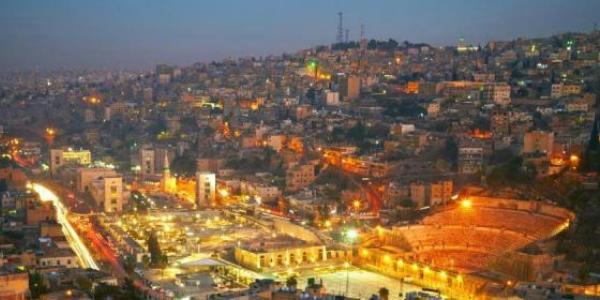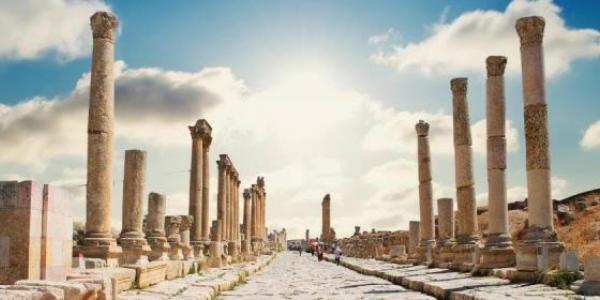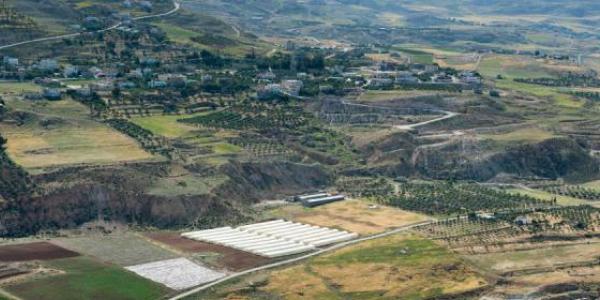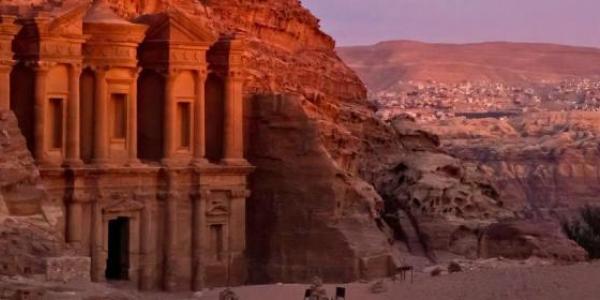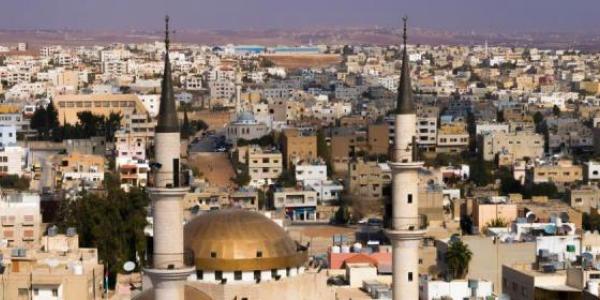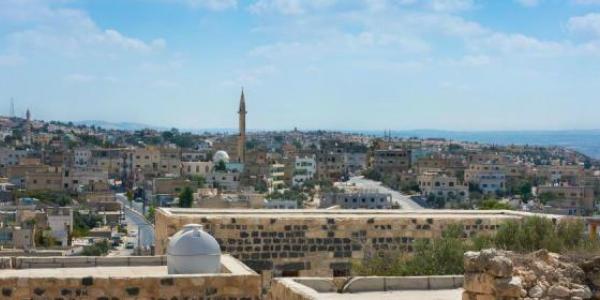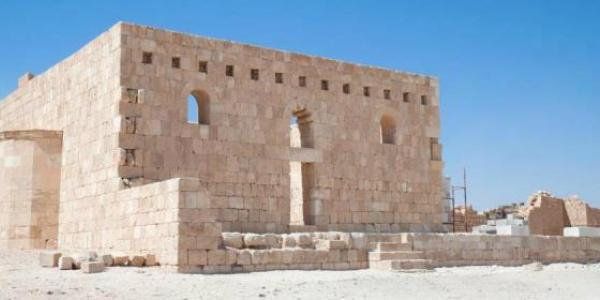Two Umayyad sites in the desert can be visited, al-Muwaqqar and Qasr Mushaish 15 km east 40 km. east respectively of Amman). The first one was constructed by Abd al-Malik ibn Sulayman by order of Caliph Yazzid II in 723 AD, as indicated in an inscription on a capital in the palace reservoir. It has a water structure with cisterns and a large reservoir.
Ahl al-Kahf (shrine, 8 km east from Amman) is on the road to al-Muwaqqar, and the Islamic shrine of Abdul Rahman ibn Awf is only within 16 km. north from Amman.
Qasr Mushash or Mushaish complex
located 40 km east of Amman in an arid zone. It is about 14-19 km north east of Muwaqqar and 21 km north west of Kharana. The Qasr complex settlement was a caravan station on the route between Amman/Philadelphia and Wadi Sirhan. The main Qasr has 13 rooms with a central courtyard and an eastern entrance. The oldest part of the site is the Qasr itself in the East, and seems to have been occupied since the 4rd century AD, as part of the Roman guard posts in the Arabian Desert, and The complex was used Umayyad times, for the same purpose, while earlier Byzantine settlements are also evident. The ruins of this latter large complex (2 sq. km) settlement was once a grand site in desert steppe, which probably served as a caravan station in Umayyad times. The structure designated as ‘caravanserai’, with a large courtyard, is the largest of the total of four square complexes in Mushash.
The settlement complex has a large number of hydraulic systems in the form of reservoirs, cisterns and dams. It has several, spatially separate units of various functions. According to the research done by the Deutsche Archaeological Institute in Amman, the Qasr, there is a large hydraulic system, with many cistern reservoirs and dams serving the Qasr and a bath. The large reservoir located in the west at a distance from the residential and functional buildings was possibly used for watering animals.
There are two Qasrs; the west Qasr Mushash and East Qasr Mushash. The Western one is a small square building located from the core of the complex and embraces an area of some nine hectares. By comparison the neighbouring Qusayr Amra the bath is of rather modest design. The settlement section to the west of the central area with smaller, multi-roomed houses can be interpreted as a simple residential area, while the buildings northeast of the central area, differing noticeably from the western houses in size and internal division, might have served as representational structures (1).The medieval Arab historian el-Maqdisi mentioned that the Qasr was on one of the three routes from Amman to the Hijaz in western Arabia and was used by the Umayyad postal service.
Qasr Enwijis (Nuweijis)
is located in northern Amman, on the road of Ain Gazal-Zarqa, beside Tabarbour area, and was built in the second or third century AD. It is the tomb of a rich Roman family, with a square shape (12.45 m), built of white limestone. It consists of the chamber, a central square with a side length 9.70 m and surrounding each corner is a small room of an area of 1.70 m x 2.20 m. It is believed that these rooms had been allocated for burial. The most important architectural element is the preserved dome. Through the excavations in the site pieces of Islamic gold coins were found.
As-Salt and Fuheis
are two close by towns (19 and 24 km. respectively north west of Amman)that can be visited. Vernacular architecture characterized by very steep topography is very interesting. Several old houses have been restored, and many projects have been implemented to revive the late Ottoman urban fabric within a modern use scheme. A beautiful wadi, Shu’eib has Prophet Shu’eib shrine. Al-Khader Mahes, another shrine is nearby. A visit to the Prophet Joshua shrine can be followed by a trip to the Jordan valley with its vegetable farms and citrus groves.
Wadi As-Sir
a palace, known as Qasr al-Abed and belonging to the Hellenistic period, was built by Tobias, a Jew or Ammonite in the end of second century BC and is 10 km. away from Amman. Some French archaeologists contest the story of the Jewish historian Flavius Josephus and believe that it was built by the Persians. Eleven man carved caves have supposedly been used as stables. The qasr is in a charming water abundant little valley, and is very much worth seeing considering its age and its beautiful lion and panther carvings. It has some of the largest stone masonry of 3 by 7 meters dimensions, and was destroyed in the earthquake of 262 AD.



